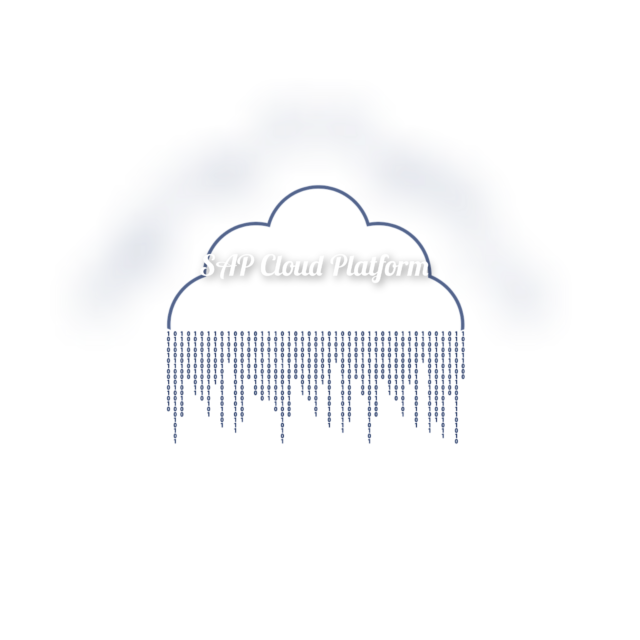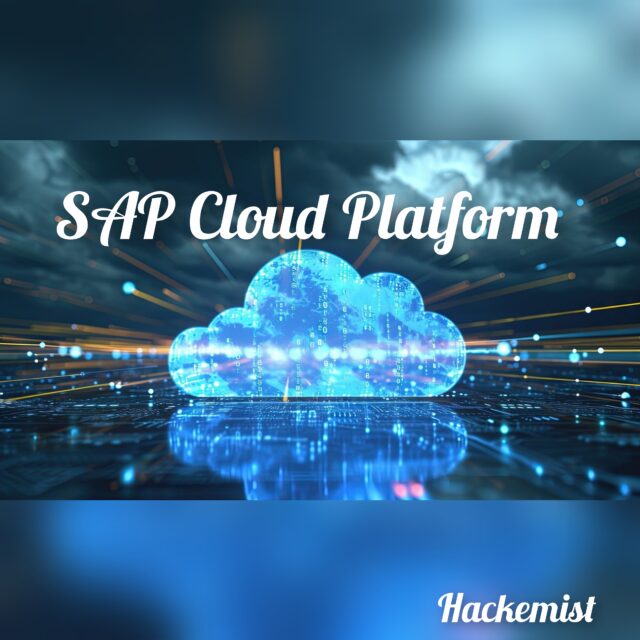SAP Cloud Platform is a platform-as-a-service offering. It makes available unique in-memory database and application services. The platform is intended to allow smooth integration between on-premise and cloud-based systems. It has allowed organizations to leverage the power of cloud computing while retaining critical data and processes in-house.
It offers quite a good number of offers and key features that make the service quite attractive. It’s an in-memory database technology based on SAP HANA, open source, and open standards. This will enable ISVs, startups, and developers to easily develop their own cloud applications. In addition, it has a feature that makes it very easy to integrate with existing systems and applications.
The primary purpose of the SAP Cloud Platform is to help organizations extend some of their existing on-premises or cloud-based ERP applications. It freely works with next-generation technologies like advanced analytics, blockchain & machine learning. In this article, we will see some awesome features and benefits of SAP Cloud Platforms.
Key Features and Capabilities

SAP Cloud Platform is a robust, extensible cloud-based platform for the development, deployment, and management of applications in the cloud enterprise. It would provide seamless integration between on-premise and cloud-based systems. In this manner, organizations will be able to exploit all those benefits that cloud computing offers in terms of savings, speed of deployment, and ease of management while maintaining total control over their data and processes in the enforcement of their strategy.
1. PaaS — Platform-as-a-Service
PaaS means Platform as a Service, the meaning of which states the development and deployment of applications in a cloud computing environment. In PaaS, all servers and server-side storage are managed by the provider; every user makes their own application.
PaaS provides an application development, runtime, and management environment that includes related tools and libraries. In other words, PaaS abstracts the writing of code; the developer has only to write it and need not worry about the underlying infrastructure. This is really good for fast app development and deployment.
SAP Cloud Platform is offered as PaaS, which enables developers to develop, deploy, and manage their own applications with no concern for the underlying infrastructure.
2. Interface with SAP and Non-SAP Systems
The SAP Marketing Cloud can be combined with SAP Cloud Integration for easy connectivity to any cloud or on-premise system. This acts as a platform for both integration and development scenarios in a common Cloud Architecture for easy and fast customer configuration and deployment. It can thus be used to process, model, and link dataflows, systems, and services from the SAP and non-SAP world.
It brings together and consolidates data from a myriad of different source types. Companies may want to communicate with all their systems to digitize their processes. At this stage, the chances for the connection of external systems exist through the standard interfaces of SAP.
2. Microservices Architecture
In the microservices architectural approach, custom microservices are developed from scratch. It is a place where complete control and tailoring are given over several functionalities. The shift towards microservices in SAP reshapes the very core of the implementation approaches by facilitating agile methods and in others.
Cascading failures are avoided, and therefore, isolation of a single microservice ensures the overall stability of the system. Isolated failures can then be worked on and patched quickly, reducing the downtime and impact on other functionalities. Further, it makes deploying and updating individual microservices faster and less risk-prone. Again, packaging microservices as containers makes them portable, scalable and ready for independent deployments, which aligns very well with cloud platforms.
4. Data Transformation
Cloud integration will help you purify, transform, and map data between different formats for smooth information flow across various data structures. Apart from several data transformation tools and services, this platform also hosts data mapping, data masking, and data aggregation. This thus enables a business to transform or manipulate their data in any way.
This ability of data transformation by the platform also offers businesses integration with other systems and applications, such as SAP and non-SAP systems. This is achieved through the transformation and manipulation of data in a manner that is accommodating to these systems.
Moreover, the data transformation ability provides security and reliability during the transformation and manipulation of sensitive data. Ensure regulatory compliance and prevent possible breaches of data.
5. API Management
The cloud solution within SAP contains already built-in functionality to manage APIs. You can thus publish, secure and manage APIs to control access to the data and enhance integrity. From a higher perspective, API management with SAP is basically divided into two major areas. Designing APIs via the API Portal and making APIs available via the Developer Portal.
It abstracts an existing API or SOAP Webservice through the façade pattern in the API Portal, using so-called “API proxies.” The API Proxy should be the unique entry point to the real implementation of the API. This internal information is hidden, and specific behaviors—in general, coded into the API itself—are delivered: Security, Traffic Management, or Data Transformation.
Deporting these features in an API management layer will free up development time for API developers, focusing more on business features than technical features. Within this self-service Developer Portal, developers may discover the APIs, see their documentation, test them, and eventually subscribe to them if needed. The Developer Portal is tightly integrated with the API Portal, delivering a smooth process to publish APIs.
6. Low-code/No-code Development
It provides drag-and-drop functionality for building integrations in a user-friendly interface, making it appropriate for people who want to integrate the SAP cloud platform. In that respect, it allows simple workflows to be designed by people who are not technically qualified. Low-code development platforms and no-code development platforms are essentially based on model-driven design, automated code generation, and visual programming.
These are user-friendly platforms to users who know processes and workflows within their business department, irrespective of whether the user can code or not. And again, besides empowering non-technical users, it matches them with experienced developers.
The major difference between low-code and no-code development platforms lies in the level of coding knowledge required by the user. In low-code development platforms, one is expected to have basic coding knowledge in order to develop and integrate complicated applications. No programming knowledge is required in no-code development platforms, however.
Advantages of Integration on the SAP Cloud Platform
Standard Commands for Programmable Instruments (SCPI) automates data exchange and process workflows, thereby eliminating manual tasks and reducing human errors. Moreover, development is very simple with the availability of pre-built connectors and a low-code/no-code environment, which helps save time and resources. Here is a breakdown of the key benefits of SAP integration with the cloud platform:
1. Better Efficiency and Cost Savings
SCPI can automate data exchange and process workflows, thereby taking out much of the manual effort involved in integration development and reducing human errors. Prebuilt connectors and a low-code/no-code environment go a step further in simplifying development; this would reduce time and save resources. Furthermore, by bringing all of the integration management into one place, SCPI will minimize IT infrastructure and lower overall costs.
2. Better Data Visibilities and Decision-Making
SCPI breaks down data silos with the easy linking of various applications. Real-time, unique views of your business data are always available across departments for data-driven decisions.
3. Scalability and Flexibility
SCPI scales easily to adapt to changing business needs. You can add new applications and data sources as your company grows, thus assuring that the integration platform will change with your business. Moreover, SCPI combines the application of both off-the-shelf connectors and custom developments, thereby granting flexibility in treating different integration scenarios.
4. Better Automation of Processes
SCPI enables the orchestration of complex business processes, thereby enabling automation across a large number of applications and systems. This smoothening of workflow reduces manual interventions and increases operational efficiency.
5. Enhanced Security and Governance
SCPI comes with security features that keep your data safe during the integration process. You can administer the access of APIs and mention data governance policies on the platform.
Use Cases
The use-cases of the SAP Cloud Platform extend to a variety of industries and include a lot more, but are not limited to these few.
1. Digital Transformation
This platform empowers companies to change their digital landscape with new cloud-based applications that will drive business growth.
2. Integration with SAP Systems
The platform allows any business to integrate its SAP systems with cloud-based applications to provide a seamless user experience.
3. IoT Integration
It provides businesses with the ability to integrate IoT devices with cloud-based applications, delivering real-time insights and analytics.
4. Customer Service
The platform enables companies to personalize customer service through real-time analytics and machine-learning-driven insights.
5. Supply Chain Management
In smoothing supply chain operations, businesses can be helped by the platform through the development of cloud-based applications that offer real-time visibility and analytics.
The Cloud Connector
It acts like a join between on-premise systems and the SAP applications and is easy to configure which systems are exposed to the SAP BTP. The Cloud Connectors lets you reuse existing on-premise assets without having to expose the complete internal landscape.
It is worth knowing that it can also work on-premise agents running in a secured network where you can easily invoke a proxy between the on-premise network and the SAP BTP. It offers fine-grained control over on-premise systems and resources, which should be accessible by cloud applications and cloud applications using cloud connectors.
Allows the usage of features necessary for business-critical enterprise scenarios. It also recovers from broken connections automatically. Keeps track of all inbound traffic for audit logging and configuration changes.
Conclusion
The SAP Cloud Platform is a multifunctional, full-service cloud-based platform with features and functionalities to build, deploy, and manage cloud-based applications. One of the most striking features of the SAP Cloud Platform includes deep integration with all SAP systems, powerful PaaS, and already integrated AI and ML, making this platform extremely exciting for any business that wants to benefit from features and services related to cloud computing without actually giving away its data and processes.
